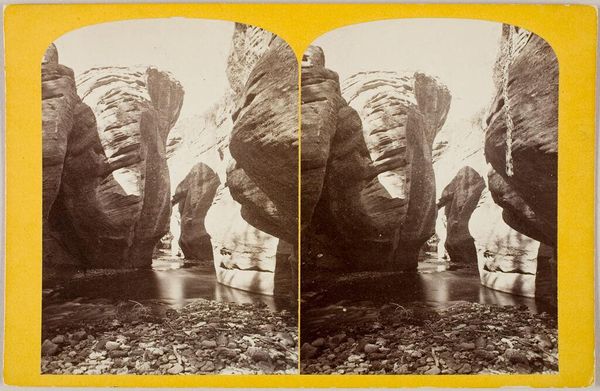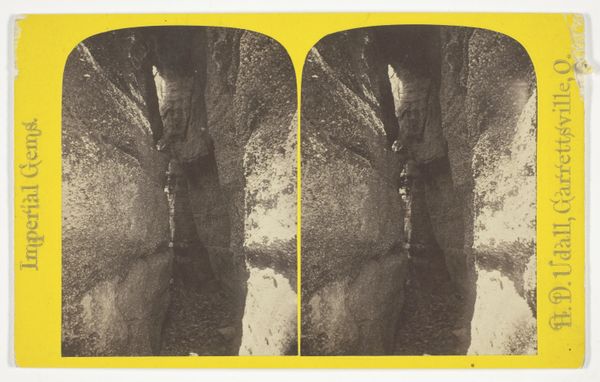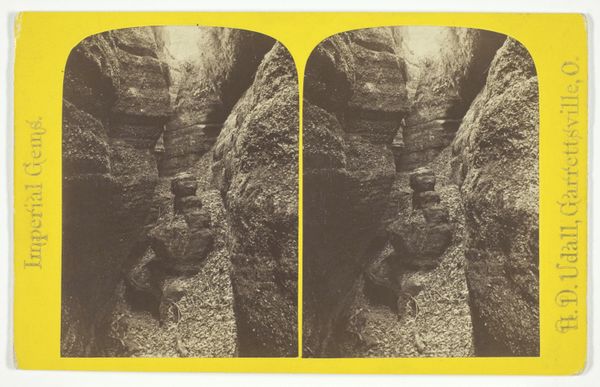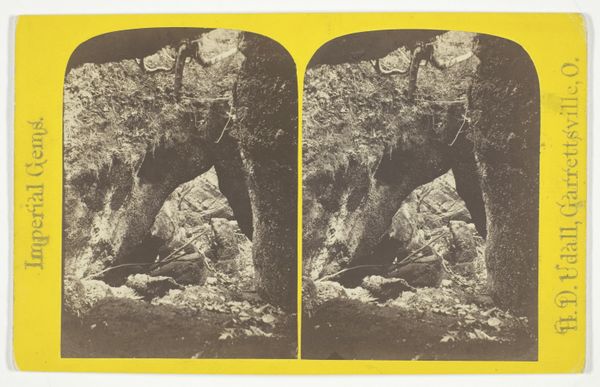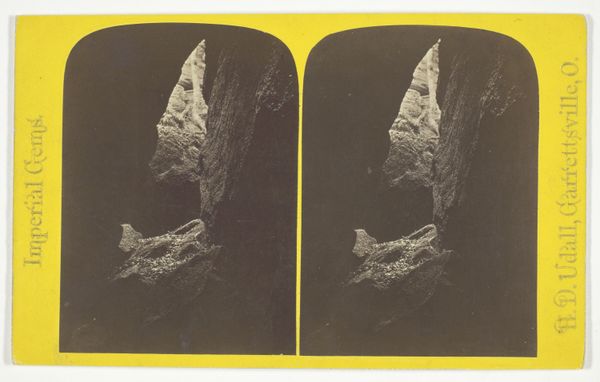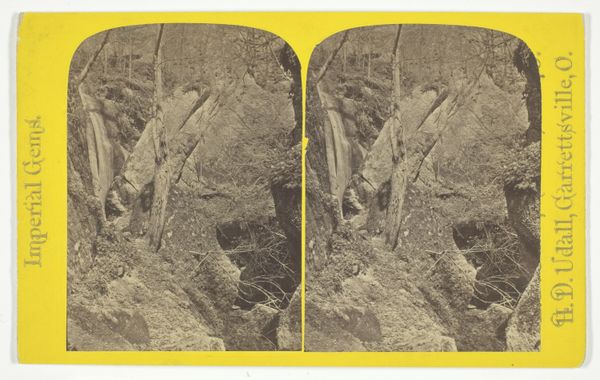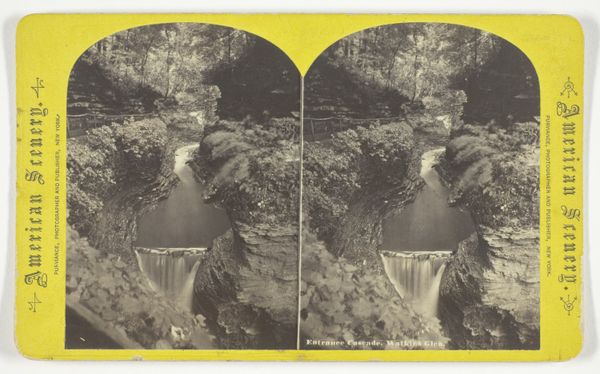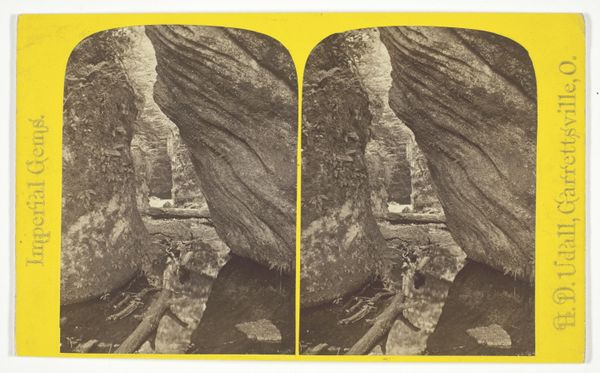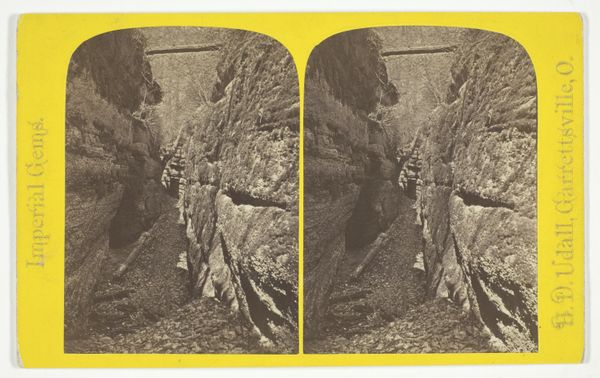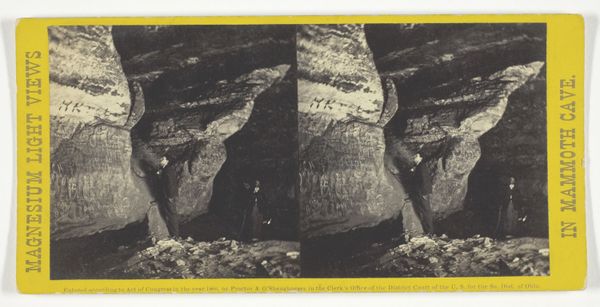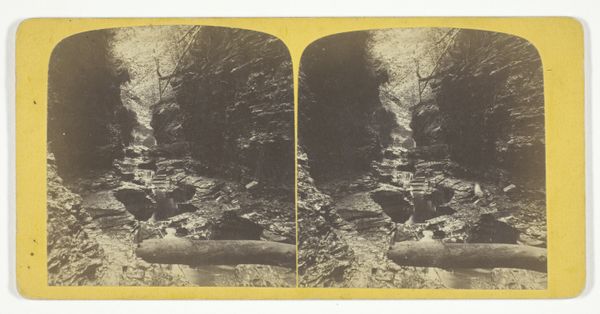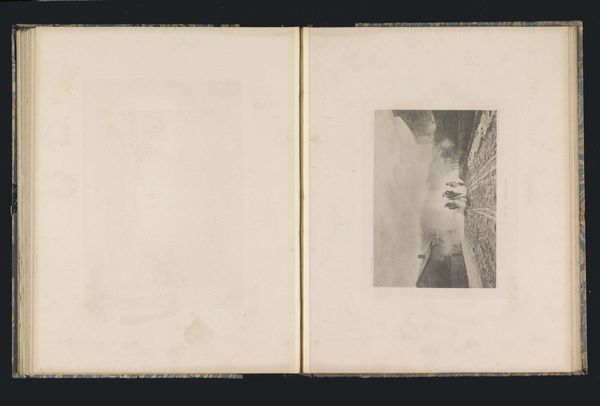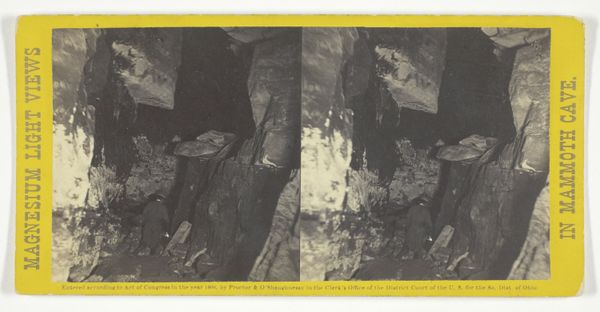
Dimensions: sight: 7.8 x 13.5 cm (3 1/16 x 5 5/16 in.)
Copyright: CC0 1.0
Curator: This is John K. Hillers' "Cañon of Ka-shu Nu-kwint," a stereograph offering a seemingly infinite perspective of this natural gorge. Editor: The stillness is striking. The monochrome tones, coupled with that placid water, create an overwhelming sense of somber, almost sacred calm. Curator: Indeed. This image, presented as a stereograph, was particularly effective at evoking a sense of depth and, therefore, the sublime. Editor: But at what cost? Hillers, like many photographers of the American West, participated in the visual erasure of Indigenous presence, reinforcing colonial narratives of untouched landscapes ripe for the taking. Curator: That's a crucial point. The canyon itself becomes a symbol of the "untamed" frontier, devoid of the people who knew and named it. The composition emphasizes scale, dwarfing any potential human presence. Editor: Exactly. This photograph isn't just a landscape; it’s a statement about power, about who gets to define and control the narrative of the West. Curator: By emphasizing these visual rhetorics, we understand how the seemingly objective photograph is a powerful tool. Editor: I see how we can use a critical lens to engage with this historical image.
Comments
No comments
Be the first to comment and join the conversation on the ultimate creative platform.
